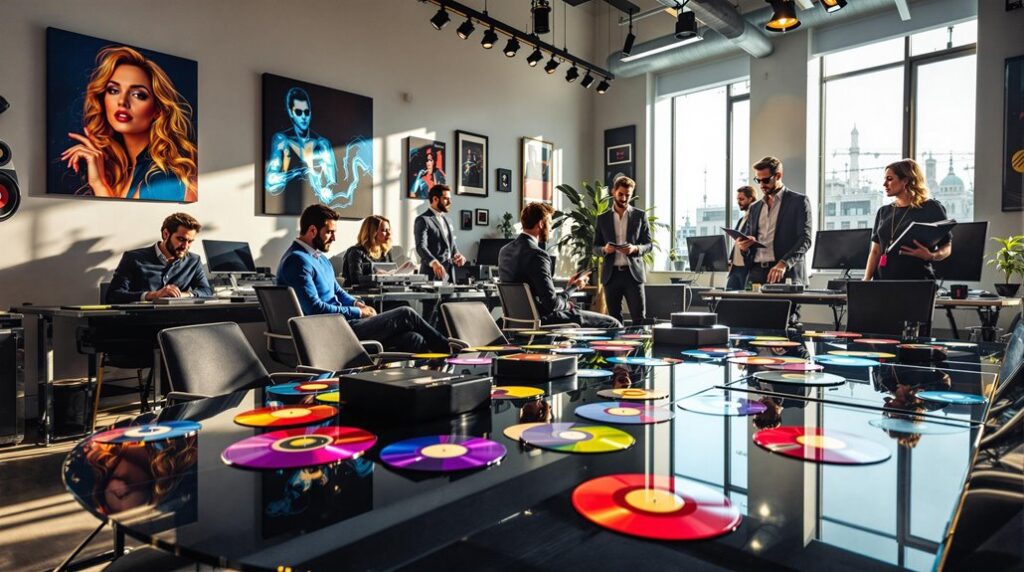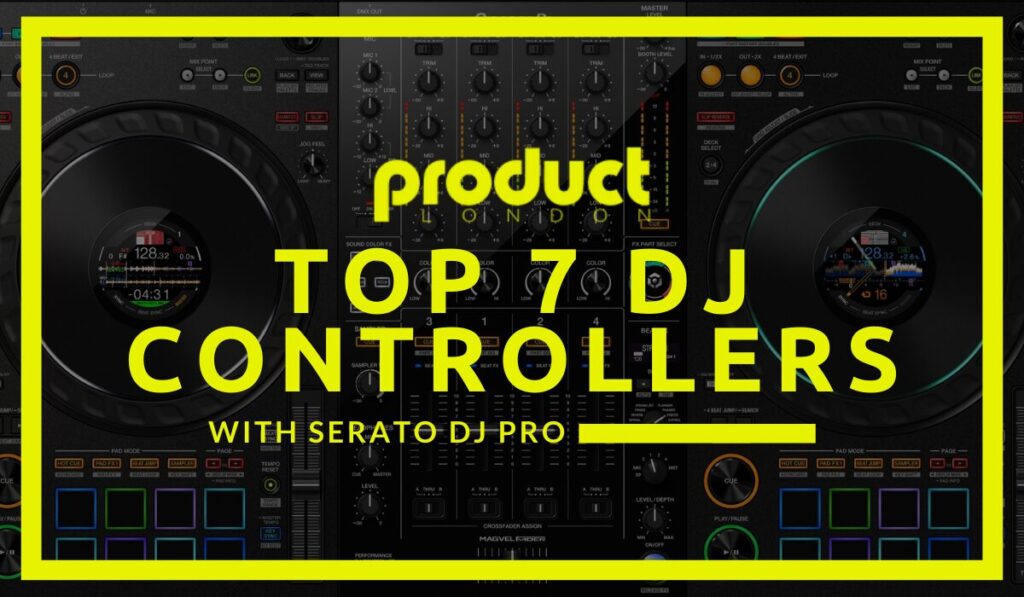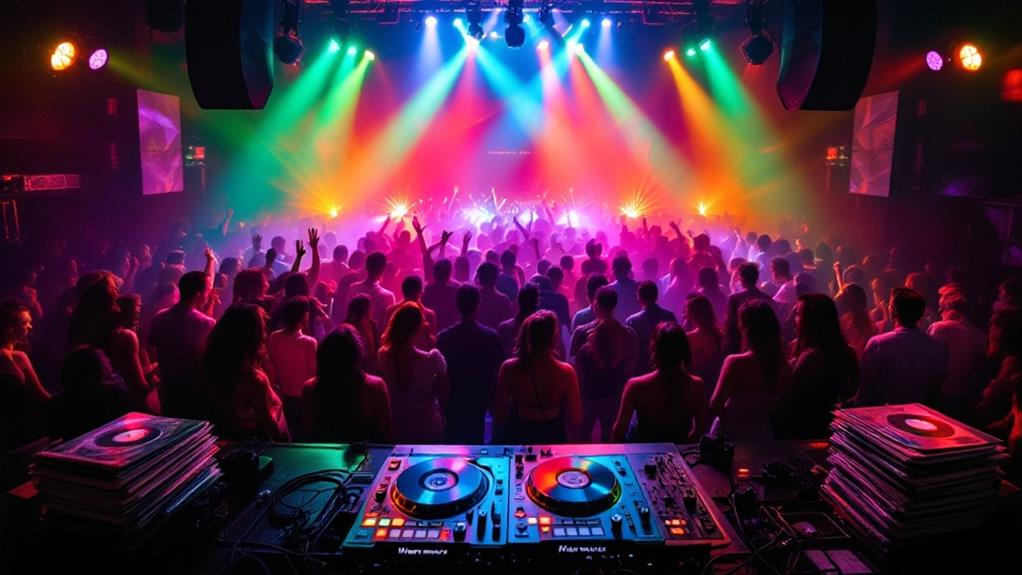A DJ rider for live performance includes a thorough set of requirements essential for the smooth operation of a show. It covers technical equipment such as CDJs and mixers like the CDJ-2000NXS2, power specifics, and booth layout instructions. Hospitality requests may encompass preferred food and beverages, alongside security needs for artist protection. Lighting and visual preferences are specified to create the desired atmosphere, often involving detailed cues. Clear communication strategies with event organizers and sound technicians are critical to avoid misunderstandings. Delving deeper into these elements reveals the true intricacies of executing a seamless live DJ set.
Key Takeaways
- Venue layout and DJ booth specifications ensure optimal performance and crowd interaction.
- Detailed technical equipment requirements prevent disruptions and compatibility issues.
- Hospitality preferences and security measures provide comfort and safety for the DJ.
- Lighting and visual setups are specified to create the desired performance atmosphere.
- Effective communication strategies clarify expectations and address potential issues.
Key Components of a DJ Rider
Crafting a thorough DJ rider is vital for guaranteeing a seamless live performance. A detailed rider addresses key components such as venue considerations and performance logistics, which are important for a successful event.
Venue considerations include the layout and location of the DJ booth, confirming it accommodates the artist’s preferred setup and facilitates efficient crowd interaction.
Performance logistics encompass the detailed stage plans and booth layouts necessary for smooth execution from setup to sound check. Reliable DJ Controller choices, such as the Pioneer DJ DDJ-FLX6, are often included to guarantee robust functionality during performances.
Power requirements are another significant element, specifying the number of power outlets and exact specifications needed for sound systems, to avoid technical disruptions.
Clear communication of any non-standard equipment requests is imperative since such requests can complicate logistics and potentially compromise performance quality if not properly accommodated.
Additionally, hospitality requests, including food and beverage preferences, guarantee that the DJ’s needs are met, allowing them to focus on delivering a superior performance.
Technical Equipment Specifications
In any DJ rider, technical equipment specifications form the backbone of a successful live performance. A well-structured rider typically outlines essential gear, such as CDJs and mixers, with popular models like the CDJ-2000NXS2 and DJM-900NXS2 commonly specified. These selections guarantee equipment compatibility, reducing the risk of technical malfunctions that could impede the performance.
Additionally, the rider includes requirements for booth monitors, emphasizing the importance of high-output, full-range speakers positioned at ear level to deliver ideal sound quality and performance enhancement. For wedding gigs, DJs often invest in brands like Bose and JBL to guarantee the best audio experience.
To further prevent compatibility issues, the rider details power sources, cable types, and connectivity needs. This specificity guarantees that promoters can adequately prepare the venue’s infrastructure, facilitating a seamless setup and operation during the event.
Furthermore, layout instructions, often accompanied by diagrams or photos, provide clarity on the arrangement of equipment within the DJ booth, enhancing both the DJ’s convenience and overall performance flow.
An extensive technical rider serves as a crucial communication tool between DJs and event organizers. It guarantees that the latter understands and meets the DJ’s equipment requirements, thereby enhancing the overall quality and success of the live performance.
Hospitality and Security Requests
Hospitality and security requests in a DJ rider are essential in guaranteeing the artist’s comfort and safety during a live performance. These requests often encompass food preferences, including specific snacks, chosen alcohol brands, and accommodation for dietary restrictions. High-profile artists may request extravagant items reflecting their status, such as gourmet catering or slushy machines. Such requirements are not mere indulgences but vital elements that contribute to the artist’s overall performance quality and satisfaction.
Equally important are the security measures outlined in the rider. These typically include the presence of dedicated security personnel to safeguard the artist during the event. A private green room is a standard request, offering a sanctuary for relaxation before and after the performance. To further guarantee peace of mind, insurance clauses are frequently specified to cover potential loss, damage, or theft of personal or performance equipment.
The following table illustrates common hospitality and security requests:
| Hospitality Requests | Security Measures |
|---|---|
| Specific snacks | Dedicated security personnel |
| Preferred alcohol brands | Private green room |
| Dietary accommodations | Insurance coverage for equipment |
| Extravagant items (e.g., slushy machines) | Event perimeter security |
Lighting and Visual Preferences
Beyond ensuring comfort and security, another critical aspect of a DJ rider is the specification of lighting and visual preferences. DJs often outline detailed requests for lighting setups, which are essential in crafting the desired atmosphere during their performances. These specifications might include the types of lights like moving head lights and lighting effects they prefer, greatly enhancing the overall visual aesthetics on stage. Such details contribute not only to the DJ’s personal brand but also to audience engagement, making the live experience memorable.
While the level of detail can vary across riders, some DJs may opt for general descriptions, whereas others provide precise lighting cues or specific effects required throughout their set. A thorough lighting rider can transform the visual aesthetics of a performance, ensuring it aligns with the DJ’s artistic vision.
In some cases, DJs might even offer links to custom visual content intended for projection or video walls, particularly in expansive festival environments.
Flexibility in lighting arrangements is frequently requested, given that DJs typically do not rehearse lighting cues prior to performances. This adaptive approach allows lighting technicians to respond dynamically, contributing to an immersive experience that captivates the audience and enhances the overall event production.
Effective Communication Strategies
Clear communication strategies in a DJ rider are vital to guaranteeing seamless integration of technical requirements with the event setup. By clearly articulating technical needs, DJs can prevent misunderstandings with sound engineers and promoters, thereby facilitating the effective fulfillment of the artist’s requirements.
Utilizing communication tools such as diagrams or detailed descriptions of the preferred setup considerably enhances clarity. These tools assist in proper equipment placement during sound checks, guaranteeing that logistical challenges are minimized and that commonly available gear aligns with standard requests. Additionally, reviewing and updating the DJ’s liability insurance coverage guarantees protection against potential accidents and damages during events.
Furthermore, establishing open lines of communication between DJs and promoters is essential for addressing any last-minute changes or additional needs. This proactive approach serves as a feedback mechanism, allowing for smoother event execution and mitigating potential performance disruptions.
Concise language within the rider is fundamental to avoid ambiguity, guaranteeing all parties thoroughly comprehend the expectations and requirements for the performance.
Incorporating standard communication tools and feedback mechanisms within the DJ rider not only streamlines the setup process but also fortifies collaborations between all stakeholders involved. By doing so, DJs can guarantee their technical specifications are met efficiently, contributing to a successful and well-coordinated live performance.
Frequently Asked Questions
What Is a Rider in Live Performance?
A rider in live performance is an extensive document detailing performance essentials and rider expectations. It guarantees all necessary technical, hospitality, security, and logistical arrangements are met, facilitating a seamless and successful execution of the artist’s performance.
What Is a DJ Rider?
A DJ rider is a thorough document detailing essential DJ equipment and performance logistics. It guarantees all technical specifications and hospitality needs are met, covering equipment types, stage setup, and artist accommodations to facilitate seamless live performances.
What to Put on Your Rider?
When drafting your rider, prioritize performance essentials like specific equipment, technical requirements, and hospitality needs. Adhering to rider etiquette guarantees clear communication with event organizers, facilitating a seamless and professional setup that enhances your overall performance experience.
What Is a Standard DJ Technical Rider?
A standard DJ technical rider outlines essential DJ equipment, ensuring compatibility and ideal performance logistics. It specifies required gear like CDJ models and mixers, booth layout, sound requirements, and hospitality needs, facilitating seamless coordination between the DJ and event organizers.
Conclusion
A DJ rider is a critical document that outlines the requirements for a successful live performance. Key components include technical equipment specifications, which guarantee compatibility and ideal sound quality. Hospitality and security requests are essential for artist comfort and safety. Lighting and visual preferences enhance the audience’s experience, aligning with the performance’s artistic vision. Effective communication strategies facilitate coordination between the artist and event organizers, ensuring all elements are executed seamlessly for a memorable event.




